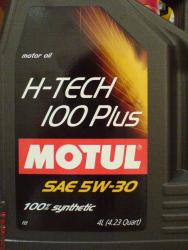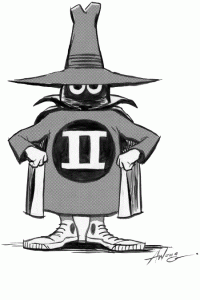Search the Community
Showing results for tags 'tech'.
-
Hi All, Was at the mall yesterday and I saw something close to an Iphone. I took a closer look at it and actually realize there is this brand "Nothing Phone" I looks very much the same and it has more designs put into it and it actually so much cheaper. Come today, I check it out. Actuall...
-
https://www.straitstimes.com/world/united-states/facebook-google-absorb-us-lawmakers-jabs-in-rare-big-tech-hearing The America politicians like to destroy the world econony. Anything trump don't like stanchions, use law to charge them. Look at trump use stanchions on China.....
-
Seat has named their supermini offering after the renowned holiday destination hoping to capture some of that youthful and carefree spirit, and for the most part, I dare say they have been largely successful. For those thinking that the new Honda Jazz looks a little too cutsey for their taste,...
-
TECH STARTUP DEVELOPS APP THAT CAN TRANSLATE WINE LABELS https://www.thedrinksbusiness.com/2019/07/tech-startup-develops-app-that-can-translate-wine-labels/ Australian startup Third Aurora is developing an app that uses AI-powered technology to enable users to translate wine labels written...
- 3 replies
-
- 1
-

-
- app
- wine label
-
(and 2 more)
Tagged with:
-
Girls vs. Boys: Brain Differences Might Explain Tech Behaviors By Julie Jargon https://www.wsj.com/articles/girls-vs-boys-brain-differences-might-explain-tech-behaviors-11569317402?shareToken=stf11a3d13d7ef4c92a3a25ed4a6e2867e&mod=djmc_pkt_evgrn Recent research shows the brain’s rewar...
-
https://www.straitstimes.com/tech/pilot-scheme-to-facilitate-hiring-of-foreign-talent-in-tech-firms?utm_medium=Social&utm_campaign=STFB&utm_source=Facebook#Echobox=1564531412
- 156 replies
-
- 10
-

-
- foreigners
- tech
-
(and 6 more)
Tagged with:
-
I chanced upon this site and they have some TECH stuff that can save some money. Sharing w the guys here or even ladies also. cheers! https://www.techconnect.com/article/3144990/hardware/cyber-monday-deals-tech-bargains-that-truly-save-serious-money.html?idg_eid=b74b6b2f5e851201e29510e8b251be...
-
https://www.youtube.com/watch?v=HQtIlxe_ZkY RoBoHoN
-
So its another year of gadget galore from CES. Lots of exciting tech this year... and a lot of it involving cars as well. Off the top of my head; Toyota announces that it will offer its about 6000 patents on fuel cell technology and stations for free use by any manufacturer. This is to drive the...
-
High tech machines unable to stop Low tech ingenious....... Yahoo news: Philippine thieves use jackfruit sap to rob cash machines Philippine thieves have been using low-tech sticky tree sap to rob high-tech cash dispenser machines in banks, police said Tuesday. Jackfruit sap is daubed o...
-
While both petrol and diesel engines are essentially reciprocating-piston, internal combustion machines, the fuels in question aren’t interchangeable because there is a fundamental difference in the way the combustion is initiated. For this reason, the two engine types are designed and constructed d...
-
9 Top Tech Myths Debunked Does more bars really mean better mobile service? Are ones really gone forever once you empty the trash? PopMech tackles some of the most frustrating falsehoods of the digital age Jailbreaking and Rooting are Illegal Smartphone owners can jailbreak their iOS devi...
-
Hello, any one from MCF heard of this grade of oil from Motul... its H-TECH 100 5w30 100% synthetic engine oil... apparently, my mechanic mentioned its so new that even the motul website has not been able to update on its corresponding webpages.. except for those found in Jap...
-
Where is the best place to shop for IT/tech gadgets in penang? Any places similar to Sim Lim?
-
http://www.todayonline.com/World/EDC091008...r-from-the-dead New opportunity?!
-
From CNA: http://www.channelnewsasia.com/stories/sin...1236698/1/.html SAF uses technology to counter lower birth rate & ageing population By Imelda Saad | Posted: 12 November 2012 1429 hrs SINGAPORE: The Singapore Armed Forces (SAF) has been affected by Singapore's declining birt...
-
just bought from autobacs. any idea if i can use this for wax application instead of just polish as well? did a google search but found no results on using it for wax instead of polish. http://www.autoglym.com/ensg/product-prodd...KMG&Range=3 thanks
-
As per topic, anyone knows where does techneat car care in caltex macpherson move to? i went there last week and found the entire station is closed. thanks.
-
BMW is illuminating the future as the company has announced two new lighting technologies. First up, the Dynamic Light Spot system uses an infrared sensor to detect any animals or pedestrians that are 100 meters (328 feet) in front of the vehicle. When something is found, a beam of light is foc...
- 7 replies
-
- illuminates
- future
-
(and 3 more)
Tagged with:
-
just now i took a citycab sonata taxi home the taxi driver is damn pro sia!! his cab is equipped with chargers for Nokia, Samsung, HTC mobile phones. got free laptop and wifi to use also. he also has a hot water flask, coffee, milo and tea in his cab. he even installed a electronic scrolling sign di...













1copy.thumb.jpg.8d9fb898c1bdc8ee48be52e4aa2ad81b.jpg)










